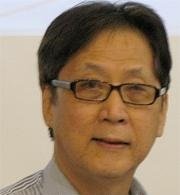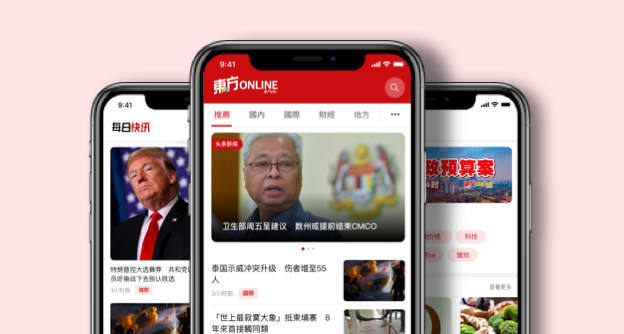随著中国潮玩公司泡泡玛特旗下的拉布布玩具成了世界各地的玩具和收藏品商店和展销会上焦点,也进一步证明了中国软实力的崛起。
拉布布的故事最初是以非政治类的文章和评论形式出现在西方媒体上。副刊编辑们聚焦于这一消费和时尚现象,分享了最新的热门新闻,吸引了欧美时尚之都的狂热粉丝。起初,西方媒体及其亚洲盟友的头条新闻和外交政策报导很少关注拉布布。
早期的报道主要集中在拉布布的朴实外表,以及这些毛茸茸、牙齿锋利的小娃娃如何凭借其独特的跨文化吸引力,迅速成为一款风靡的商品。尤其是在西方国家,这些玩偶出现在歌手蕾哈娜、雪儿、前足球巨星大卫柏罕等名人的手袋上之后,拉布布受到热捧,销量也达到数百万,泡泡玛特的老板兼首席执行员(王宁)成为近年来增长最快的亿万富翁之一。
《福布斯》指出,拉布布并非只是一股小众潮流,而是泡泡玛特爆炸性成长的核心。拉布布的“精灵怪兽”系列在2024年就为公司带来了超过30亿人民币/17亿令吉的收入。这也让泡泡玛特国际销售额飙升了超过700%,成功打造其全球消费品牌地位。如今,泡泡玛特的市值接近400亿美元/约1700亿令吉,超越了美国孩之宝和美泰儿等传统现具巨头,而拉布布的狂热正是泡泡玛特成功的关键。
拉布布回响
关于拉布布的报导,已从最初探讨中国文化产出如何突破成为时尚潮流,进一步深化为行为经济学的经典案例。
来自印度、日本和台湾等地的反华评论员如今将拉布布热潮,置于地缘政治论述下,将其描绘成中国对西方的最新威胁。在他们看来,拉布布的热潮与一个令人无法接受的冷酷中国形象不符。这更与他们一心想煽动起来对抗中国的地缘政治和意识形态风潮背道而驰。
对拉布布热潮的客观、非政治的反应能持续多久还有待观察。但大多数西方政府将中国描绘成关乎全球生存的威胁。
因此,西方媒体言论常在“无法接受中国崛起地位”和“中国即将崩溃”的两极之间摇摆不定。如果出现新的阻力来压制泡泡玛特的崛起,从而阻挡中国软实力这一新势力的成长,也不足为奇。
然而,那些一心想妖魔化中国的西方宣传高手们将面临巨大的挑战。除了可爱的玩具和盲盒之外,还有其他因素使得中国目前在2025年全球软实力指数中以72.8/100的创纪录得分超越英国,成为世界第二大最具影响力的国家。
中国软实力多面向成长
中国软实力崛起,反映了中国社会经济、文化、政治和技术发展与成就的多面向进程。这使得西方批评人士不得不重新审视传统的妖魔化中国方法——制造负面报道的耸人听闻、关注引发恐惧和不安全感的故事,以及使用点击诱饵手段作为宣传工具。
以下为中国软实力成长的主要驱动因素和表现。
品牌影响力不断提升
在“全球喜爱的产品和品牌”名单中排名第五,中国品牌如比亚迪、抖音和华为等,自2008年以来,其全球品牌价值成长了23倍(目前价值1.4兆美元/3.3兆令吉)。
娱乐出口
像《哪吒2》(全球票房超过20亿美元/84亿令吉)这样的热门电影和像《黑神话:悟空》这样的热门游戏,扩大了中国文化影响力,尤其是在年轻一代。
数码平台
抖音(拥有10亿用户)和小红书正在重塑全球媒体消费,推动中国在“易于沟通”方面的排名上升了20位。
全球主要商业属性
中国在“营商便利度”(自2020年起)和“未来成长潜力”(自2022年起)方面均位居全球第一,体现了其持续的经济吸引力。
“一带一路”倡议
“一带一路”倡议涵盖100多个国家的基础设施项目,加强了经济联系,大幅提升了中国在“与其他国家关系良好”方面的排名。
全球科技与绿色科技威力
中国在“科技与创新先进程度”排名中位列第二,在“科学先进程度”排名中位列第三,“深度求索”人工智能的发布更引发了美国科技股9690亿美元/4.1兆令吉的抛售,彰显了中国重塑全球科技市场的能力。同样受到全球大多数国家欢迎的还有中国的电动车、风力涡轮机和太阳能板等绿色科技产品,这些产品为建立一个更环境永续的世界做出贡献。
永续性和治理提升
访华游客协助中国在“永续城市/交通”排名中攀升至第五位。尽管西方国家竭力劝阻本国公民前往中国旅游,但造访的游客一致将自己的中国之行描述为“安全”、“治理良好”和“值得信赖”(上升了12位)。这与美国和英国在治理指标上的下滑形成了鲜明对比。西方游客对新疆和西藏的评价中也反映了这些正面的评价。
那一些在英国、美国、澳洲和亚洲媒体的记者们,用毫无根据的指控误导读者,声称维吾尔族和藏族群体遭受镇压,但他们从未去过中国!
最后,但或许同样重要的是,美国软实力的快速下降,尽管这尚未反映在最新的“软实力”排名中。预计2026年的全球软实力排名将凸显美国的衰退。
特朗普政府对世界其他国家发动的关税战令包括传统盟友在内的许多国家感到恐慌,外援削减也影响到了美国外交政策喉舌和游说团体(例如美国之音、美国国家民主基金会),持续的内部政治分裂和混乱,以及美国作为可靠或值得信赖的世界领导者声誉的下降,这些都加速了全球软实力认知和表现的转变。
中国软实力的下一步
显而易见的是,中国非国家驱动的软实力正开始重塑全球市场、开启联盟和社会文化规范,全球南方国家和欧洲的受众开始拒绝西方的叙事。然而,这不保障未来一定会成功。
西方政府和媒体的反华立场是透过意识形态偏见、制度激励和地缘政治战略相互交织的系统来运作的。随著新的结构性驱动因素出现,战术上的重新调整似乎正在进行中——例如贸易和商业领域的规则和立法——旨在维持西方扭曲的叙事框架。这种新策略将阻碍公正、平衡的全球理解,并凸显了建立以求真务实和实证严谨为基础的多元化独立媒体生态系统的必要。
年轻一代的媒体读者尤其应该意识到,西方及其盟友媒体正致力于透过灌输新的冷战思维来打倒中国。
林德宜《西方如何阻挡拉布布、泡泡玛特和中国软实力》原文:How Will The West Block Labulabu, Pop Mart and China’s Soft Power
As Pop Mart’s Labubu makes its remarkable journey into the shops and showoffs of toys and collectibles around the world, this is further evidence of the rise of China’s soft power.
The Labubu story first appeared in western media as non-politicized articles and commentaries. Focusing on a consumer and fashion phenomenon, lifestyle editors shared the latest hot news that was drawing excited crowds in the style capitals of Europe and America. Initially the story was given little attention in the headline news and foreign policy reports of western media and their supporting Asian media allies.
Much of the early coverage focused on Labubu’s modest origins and how the unusual cross cultural appeal of small,fuzzy and sharp toothed dolls rapidly became a merchandising monster. The owner and C.E.O. of Pop Mart became one of the fastest billionaires in recent times as the toy racked up millions of views and sales, especially after the dolls began to adorn the handbags of celebrities such as Rihanna,Cher,Beckham and others in the west.
Forbes has noted that Labubu isn’t just a niche trend. It's at the center of Pop Mart’s explosive growth. The “Monsters” line, with Lebubu as its poster child, brought in over RMB 3 billion in 2024. International sales soared by more than 700%, cementing Pop Mart’s place as a global consumer brand. Today, the company boasts a market cap approaching U.S.$40 billion - surpassing legacy giants such as Hasbro and Mattel - with Labubu mania at the heart of its success.
Responses to Labubu
The initial stories have now moved on to delve deeper into how China’s cultural exports are serving not only as a breakthrough in fashion trends but also as a master class in behavioural economics.
Anti China commentators including from India,Japan and Taiwan are now taking it into the realm of geopolitics by depicting Labubu as the latest threat to the West from China. To them, Labubu is carving out an unacceptable cool image of the country. This is against the geopolitical and ideological headwinds that they are intent on whipping up against China.
How long an objective and non-political response to the popularity of Labubu can continue remains to be seen. Most western governments portray China as a global existential threat.
Hence their media rhetoric oscillates between what is routinely put out as the poles of unacceptable dominance and imminent collapse of China. It will not be surprising if some new objection is found to counter Pop Mart's expansion so as to stymie the growth of this new manifestation of China’s soft power.
However, western propaganda spin masters intent on demonizing China will have their work cut out for them. Other factors besides lovable toys and blind boxes account for China's current position as the world's second-most influential nation surpassing the UK in the 2025 Global Soft Power Index with a record score of 72.8/100.
Growth Of Multifaceted China Soft Power
This ascent reflects a multi-faceted process spanning Chinese socio-economic, cultural, political and technological development and achievements which have made Western critics engaged in conventional approaches demonizing China - sensationalism of adverse reports, focus on stories that arouse fear and insecurities,and the use of click baits as a propaganda tool - having to go back to the drawing board.
Below is a list of the key drivers and manifestations of this growth in China’s soft power.
Rising Brand Power
Ranked 5th for "products and brands the world loves", Chinese brands such as BYD, TikTok and Huawei have driven a 23-fold increase in global brand value since 2008 (currently valued at $1.4 trillion).
Entertainment Exports
Blockbusters such as Nezha 2 (over US$2 billion in global box office) and gaming hits (e.g.Black Myth: Wukong) amplify China’s cultural reach especially to the younger generation.
Digital Platforms
TikTok (1 billion users) and Xiaohongshu(RedNote) are reshaping global media consumption,contributing to China’s 20-rank jump in "easy to communicate with".
Top Global Business Attributes
China ranks first globally for "ease of doing business" (since 2020) and "future growth potential" (since 2022), reflecting its sustained economic attractiveness.
Belt and Road Initiative
BRI Infrastructure projects across 100+ countries have strengthened economic ties,boosting China’s rank for "good relations with other countries" considerably.
Global Tech and Green Tech Prowess
Ranked #2 for "advanced in technology and innovation" and #3 for "advanced in science", DeepSeek AI’s launch triggered a $969B selloff in U.S. tech stocks, signaling China’s capacity to reshape global tech markets. Just as favourably welcomed by most of the world are China’s green tech products in electric vehicles, wind turbines and solar panels that make for a more environmentally sustainable world.
Sustainability and Governance Gains
Visitors to China have helped the country climb to a fifth place rank in "sustainable cities/transport". Despite Western efforts to discourage their citizens from traveling to China, those visiting have invariably described their stays as "safe," "well-governed," and "trustworthy" (up 12 ranks). This contrasts with U.S. and U.K. declines in governance metrics. These favourable comments can also be found in Western tourists' feedback on Xinjiang and Tibet.
British, American,Australian and Asian media reporters misleading their readership with unsubstantiated claims of repression against the Uyghur and Tibetan communities have never been to China!
Lastly but perhaps not least is the rapid erosion of American soft power though this has not yet been reflected in the latest “soft power” rankings. Expect the 2026 global soft power ranking to highlight the U.S. decline.
Together with the Trump administration’s tariff war against the rest of the world which has spooked many countries including traditional allies, the foreign aid cuts affecting U.S. foreign policy mouth pieces and lobbies (e.g., Voice of America, National Endowment for Democracy), the continuing internal political division and disarray, and declining reputation of the U.S. as a reliable or trustworthy world leader are accelerating the shifting balance now taking place in global soft power perceptions and performance.
What Next For China's Soft Power
What is evident is that China's non-state driven soft power is starting to reshape markets, alliances, and socio-cultural norms worldwide with audiences in the global South as well as in Europe rejecting Western narratives. However, future success is not guaranteed.
The anti-China stand of western governments and media operates through interlocking systems of ideological bias, institutional incentives, and geopolitical strategy. A tactical recalibration appears to be taking place with new structural drivers - e.g. regulations and legislation in the trade and commercial arenas - devised to sustain a distorted narrative framework. This latest strategy impedes fair and balanced global understanding and underscores the need for the emergence of diversified independent media ecosystems grounded in truth seeking and empirical rigor.
The younger generation of media readers especially should be aware that western and allied media are intent on bringing down China through feeding them with a new cold war mindset.
要看最快最熱資訊,請來Follow我們 《東方日報》WhatsApp Channel.








